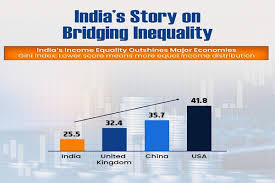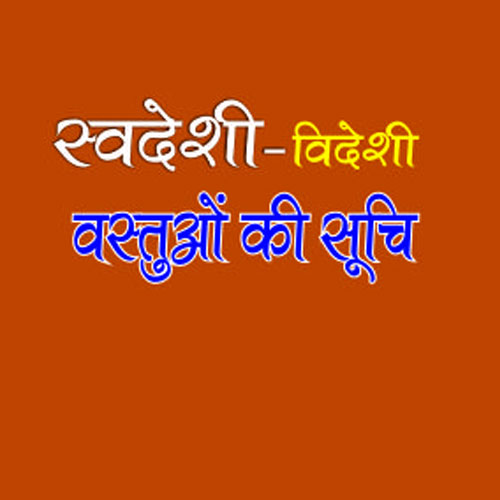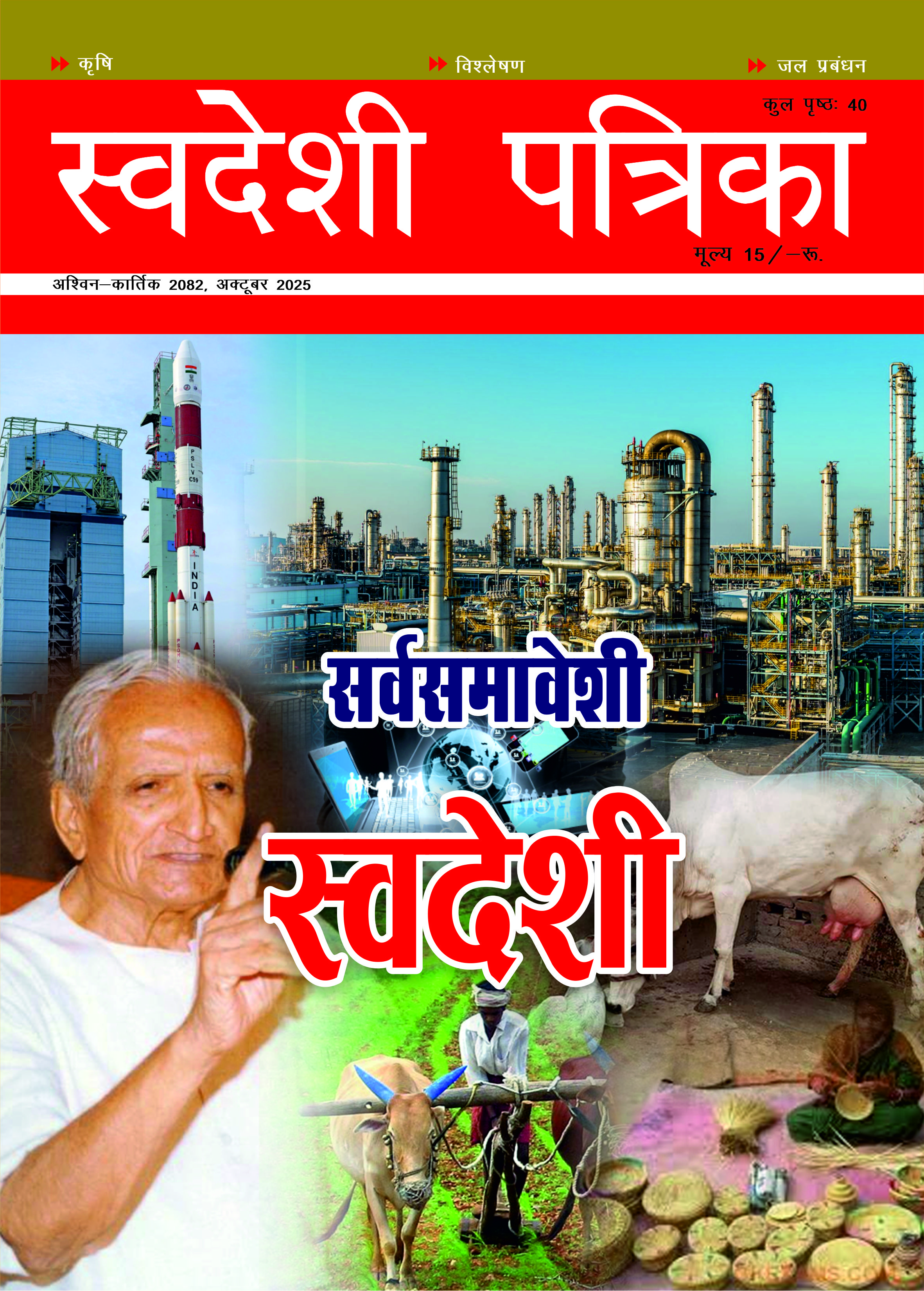
India Fourth Most Equal Country
We must understand that although inequalities have come down, the credit for the reduction in inequalities goes to govt support & to some extent freebies; but we cannot expect the govt to continue supporting the poor & the deprived indefinitely. — Dr. Ashwani Mahajan
The recently released World Bank's 'Spring 2025 Poverty and Equity Brief' has started a debate in India and the world. Debate is that whether India has really become the fourth most equal country in the world, as stated in this report? In fact, this report contradicts the discourse prevalent in the country and the world. A large number of intellectuals in the country, citing earlier reports and figures, have been arguing that inequalities have increased along with economic growth in the country. In other words, it can be said that along with economic growth, the gap between the poor and the rich has widened, the conditions of the deprived class have worsened and this inequality is visible in both income and wealth. In such a situation, if a report says that inequalities have narrowed down in the country, then confusion is obvious.
But it is also true here that those who believe that the income and wealth inequalities have increased in the country can also prove their point on the basis of data; and the report published by the World Bank, claiming reduction in inequalities, is also based on data. Let us try to understand this puzzle and enquire that whether the World Bank report is just a play of data, as its critics claim or there is some truth in it. And if this is true, then we will also try to understand, how inequalities have come down in India?
Income and wealth inequalities
Gini coefficient is the most popular measure of inequalities. The Gini coefficient ranges from zero to one, where zero indicates complete equality and 1 shows complete inequality.
According to the data of the National Council of Applied Economic Research (NCAER) and other household income surveys, the income Gini coefficient was 0.410 in 2023, which was 0.371 in 1955. If we consider the distribution of wealth, in rural areas this coefficient was 0.405 in 2023 which was much higher than 0.341 in 1955, whereas in urban areas it decreased slightly from 0.392 in 1955 to 0.382 in 2023, but it continues to remains at a very high level.
But the inequalities in consumption have decreased““Amid the growing inequalities of income and assets in India, the good news is that the inequalities in consumption are decreasing. This was stated in different words, first in the UNDP’s Report on multidimensional poverty and later in the recently released report of the World Bank, it was told that a big reduction has been registered in extreme poverty in India. Although the definition of extreme poverty has been changed from 2.15 dollars per day to 3.0 dollars per day, even then only 5.3 percent of people were suffering from extreme poverty in 2022-23. Interestingly this figure was 27.1 percent in 2011-12 (Based on 3.00 dollar criterion). And if this definition is kept as before at 2.15 dollars, then the percentage of people suffering from extreme poverty will only be 2.3 percent in 2022-23.
In this report released recently by the World Bank, it has also been said that the inequalities in consumption in India have now reduced. India’s journey towards a more equal society is reflected in its Gini Index (ranging from 0 to 100) over the years. The index was measured at 28.8 in 2011, and reached 25.5 in 2022. That means, now from UNDP to the World Bank, there is consensus, that consumption inequalities have certainly narrowed down in India.
But on the other hand, critics putting forward the argument of increasing inequalities in India, are not ready to accept the fact that both poverty and consumption inequalities have come down.
What do these critics say?
Their first argument is that the World Bank report is based on the data of the Household Consumption Expenditure Survey (HCES Survey) and it does not include income and wealth. Consumption based Gini coefficient underestimates the inequalities, because rich people save a large part of their income. In comparison, income based inequalities is a more comprehensive concept and the reality is that income and wealth inequalities have actually increased in India.
The second argument of the critics is that the survey used by the World Bank could not assess consumption properly. The top five percent rich people under-report their consumption and the conclusion based on that will not be correct.
Thirdly, critics also say that there is a big difference between the methodology used in surveys of 2011-12 and 2022-23, two years, between which the comparison has been made. Therefore, comparison may not be correct.
Critics further argue that only 49 percent of the total national consumption could be covered in the survey, because the rich underestimate their consumption, so correct conclusions cannot be drawn on this basis.
We must understand that no survey is perfect in all aspects. So, on the basis of these arguments, we cannot deny the fact that while reports after one another are indicating a reduction in poverty, whether it is extreme poverty or multidimensional, a reduction in consumption inequalities is a reality. This has happened in India due to the inclusive policies of the present government. For the first time in such a short time, the construction of three crore houses in rural areas and one crore houses in urban areas has transformed the lives of the poor. Along with this, electricity in all houses, piped water for the majority of the population and availability of clean cooking fuel, as well as free secondary health care and primary health care facilities up to Rs 5 lakh, to every eligible family below a certain income under the Ayushman Bharat Yojana are taking care of the factors that make people poor.
Along with this, we also see that earlier also governments used to spend huge amounts of money in the name of improving the consumption of the poorer sections of the society, but due to huge corruption and leakages, the expected results were not in sight. But opening of more than 56 crore Jan Dhan bank accounts with zero balance and linking all these accounts with Aadhaar and mobile numbers made direct benefit transfer possible without any leakage. This not only reduced government expenditure but also improved the lives of people by lifting their consumption standards. So, while the shortcomings and weaknesses of household surveys measuring inequalities can be understood, there has definitely been a reduction in poverty, both extreme or multidimensional. The same is reflected in the Household Consumption Expenditure Survey (HCES), which shows a reduction in consumption inequalities, but this should not be taken as the end goal.
We must understand that although inequalities have come down, the credit for the reduction in inequalities goes to government support and to some extent freebies; but we cannot expect the government to continue supporting the poor and the deprived indefinitely. In the long run, we have to make people capable enough, so that they can fulfill the needs of their families, such as housing, education, health, sanitation, electricity, water, etc. People have to be empowered by providing them requisite skills and small businesses and entrepreneurship have to be encouraged in the country on the basis of decentralized development model, so that we can achieve the long term objective of required equality in distribution, in income and also in wealth.


